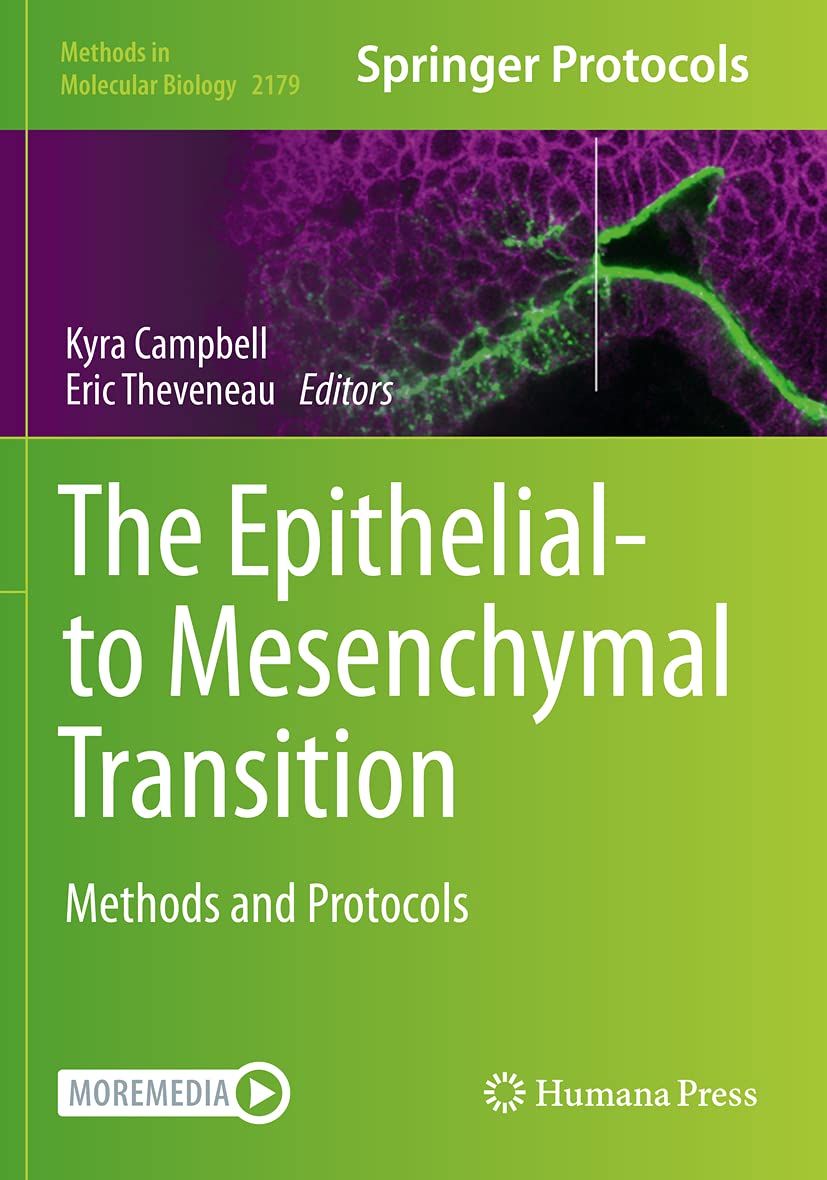The Epithelial-to Mesenchymal Transition: Methods and Protocols: 2179 (Methods in Molecular Biology)
The Epithelial-to Mesenchymal Transition: Methods and Protocols: 2179 (Methods in Molecular Biology) is backordered and will ship as soon as it is back in stock.
Couldn't load pickup availability
Genuine Products Guarantee
Genuine Products Guarantee
We guarantee 100% genuine products, and if proven otherwise, we will compensate you with 10 times the product's cost.
Delivery and Shipping
Delivery and Shipping
Products are generally ready for dispatch within 1 day and typically reach you in 3 to 5 days.
Book Details
-
Author: Eric Theveneau
-
Brand: Humana
-
Edition: 1st ed. 2021
-
Binding: Paperback
-
ISBN: 9781071607817
-
Number of Pages: 429
-
Release Date: 18-09-2021
-
Languages: English
-
Package Dimensions: 10.0 x 7.0 x 1.0 inches
About the Book
"Imaging Epithelial-to-Mesenchymal Transition in In Vivo Systems" by Eric Theveneau provides a comprehensive overview of methods for imaging the critical biological process known as epithelial-to-mesenchymal transition (EMT) and its reverse, mesenchymal-to-epithelial transition (MET), within living systems. This process is pivotal in development, wound healing, and cancer metastasis, and this book offers invaluable insight into the mechanisms underlying these transitions.
Spanning 429 pages, this volume details a wide range of techniques and strategies to visualize and measure EMT/MET in vivo, providing researchers with the necessary tools to investigate these transitions at a cellular and molecular level. By focusing on in vivo systems, the book emphasizes methods that allow for the study of real-time changes and their dynamic role in various biological contexts.
Theveneau’s approach is not only technical but also deeply insightful, offering clear explanations and practical guidance for leveraging these advanced imaging systems to uncover the fundamental biological mechanisms behind EMT and MET. This work is essential for scientists and researchers in cell biology, developmental biology, and cancer research, making it a crucial resource for advancing our understanding of these complex processes.





